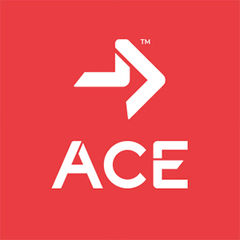We spoke with ACE Executive Vice President, Engagement, Graham Melstrand about how the COVID-19 pandemic is impacting exercise professionals and health coaches in the fitness industry.
ACE: ACE is a partner to many in the fitness industry. Who has ACE been currently partnering with to ensure that exercise professionals and health coaches have reliable information?
Graham Melstrand (GM): ACE is actively engaged with a significant number of organizations and institutions in the public health, health advocacy, academia and fitness industry to ensure that exercise professionals and health coaches have the best available information as they focus on a return to opening facilities, educational institutions and to providing exercise programs and interventions to clients and participants. Some of those organizations include the Centers for Disease Control (CDC) and the World Health Organization (WHO), trade organizations like the International Health, Racquet and Sportsclub Association (IHRSA), the Medical Fitness Association (MFA) and the Physical Activity Alliance (PAA) which is a coalition of organizations that advocate on physical activity issues and policies. We are also working closely with our peer organizations and exercise professional registries like the Coalition for the Registration of Exercise Professionals (CREP) which operates the US Registry of Exercise Professionals (USREPS) and ICREPS and Europe Active which represent international registries around the world to learn about and share best practices.
ACE: What do you think makes this situation different for exercise professionals and gym goers than earlier recessions or economic downturns?
GM: In previous economic downturns, like the 2008 recession, many fitness facilities didn’t necessarily feel the impact of downturns except for communities where housing foreclosures emptied entire neighborhoods. For many regular exercisers, fitness facilities are a relatively affordable place where they can exercise and socialize to help manage the rigors and stresses of their personal and professional lives. Membership sales and other supplemental streams of revenue may have been impacted in previous situations. However, facility operators were still able to conduct their primary business of providing a place to exercise with programs and professionals to support their members’ health, fitness or sports performance goals.
COVID-19 upended that business model which is predicated on the place where services are delivered with people being in close proximity to each other. Facilities, both large and small, have made a significant effort to engage members digitally with programs and other content that they can consume at home during the pandemic. This change has also exposed a need to be able to provide programs and services that are appealing to consumers that don’t require individuals to come into the facility itself.
At ACE, we believe that there is a significant opportunity to offer health coaching programs that focus on improving healthy lifestyle behaviors that would be appealing to a broad range of consumers that could be easily delivered while strictly adhering to physical distancing guidelines.
ACE: Are there any resources you recommend for exercise professionals who are preparing to return to work look at for guidance?
GM: ACE is pointing exercise professionals to two documents:
- Infographic- ACE designed an infographic to help exercise professionals and health coaches keep public health and safety measures top-of-mind when preparing to return to work. It compiles the best practices outlined by the Centers for Disease Control and Prevention (CDC) and World Health Organization (WHO) and applies them to?exercise?professionals.??
- Guidance document- ACE and the Coalition for Registered Exercise Professionals (CREP) compiled a guide that contains questions to ask and topics to consider as facilities and exercise professionals prepare to resume delivering exercise programs and fitness services.
ACE: Many health and fitness facilities have had to close during this time. Do you think this situation will force many facilities to close permanently?
GM: There are several factors that will ultimately determine whether health and fitness facilities will be forced to close permanently as a result of the business interruption associated with the mandatory closures due to the COVID-19 pandemic. Those factors include:
- What timelines each state establish to lift the restrictions on facilities
- How quickly consumer confidence returns regarding the safety of returning to structured indoor exercise programs and facilities
- How quickly those facilities will be able to resume something that resembles normal operations
- What percentage of fitness businesses were successful in accessing the small business stimulus programs and how many have been able to secure accommodations from landlords on leases
ACE: What do you think the “new normal” that emerges from COVID-19 means for the health and fitness industry?
GM: ACE believes that, while the current situation for the industry and exercise professionals is difficult and uncertain, it represents an opportunity and incentive for the industry to evolve and diversify its offerings to be able to reach an entirely new audience of individuals who are looking to adopt or maintain a healthier lifestyle. This will open the potential for the facility to serve as the hub, for broader range of community-facing programs and services delivered remotely or digitally.




 by
by 





 by
by